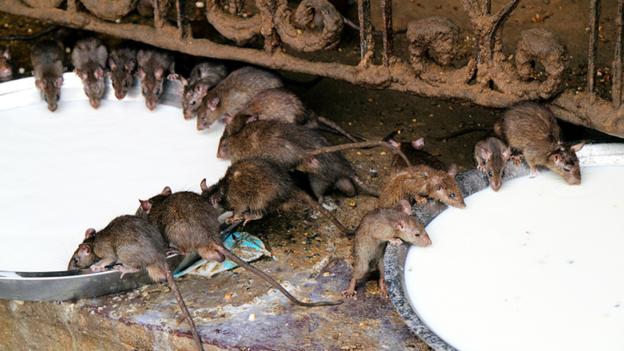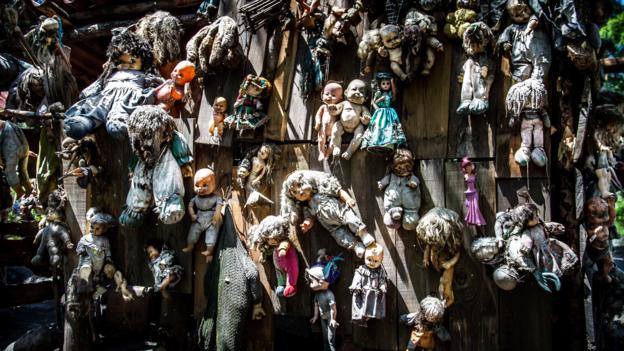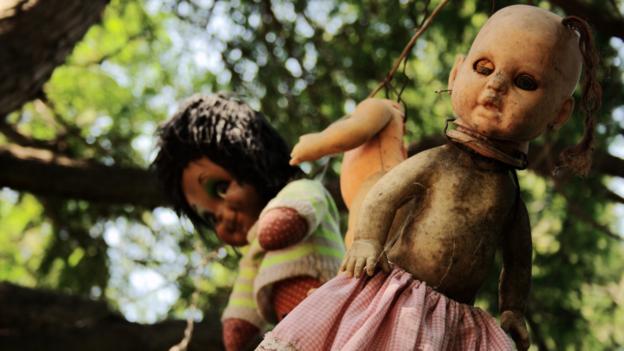Top 5 scariest places on Earth

If travel broadens our horizons and horror heightens our senses, then the two combined pack a powerful punch.
From a temple crawling with thousands of rats, to an island swarming with flesh-melting snakes – question-and-answer site Quora uncovered some of the most disturbing, bone-chilling and goosebump-inducing places on Earth.
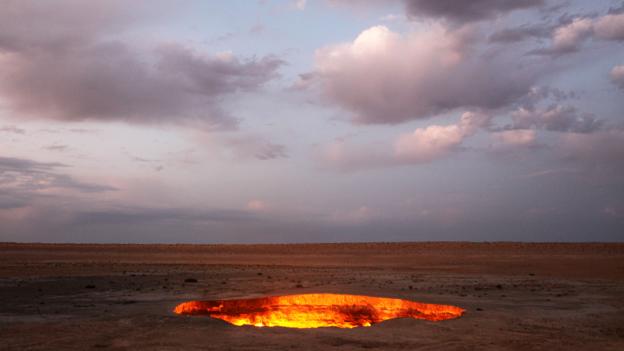
BKXKH4 Derweze or Darvaza, aka as the Door to Hell is a huge crater of burning natural gas in the Kara-kum desert in Turkmenistan.. Image shot 08/2009. Exact date unknown.
Looking for an adventure this year? Look no further.
A glacial lake full of human skeletons
In 1942, a forest ranger hiking near India’s Roopkund Lake, perched some 5,029m in the Himalayas, stumbled across a startling discovery: the shallow, glacial lake was surrounded by human skeletons.
When summer came and the ice melted, hundreds of more skeletons were revealed, some with flesh and hair still attached. Who, or what, had killed so many people, turning a remote high-altitude lake in an uninhabited part of the Himalayas into a mass grave?
Everyone from locals to expert anthropologists speculated on how Skeleton Lake came to be, wrote Varun Ojha. Theories ranged from epidemics to landslides to ritual suicides.
A 2004 expedition offered more clues. The skeletons were the remains of 200 to 300 people dating to back the 9th Century, and were divided into two distinct groups: a closely related family or tribe, and a smaller, shorter group of locals. They were found with rings, spears, leather shoes and bamboo sticks. Short, deep cracks in the skulls suggested all of the bodies appeared to have died in the same way, from blows to the head from rounded objects, not weapons.
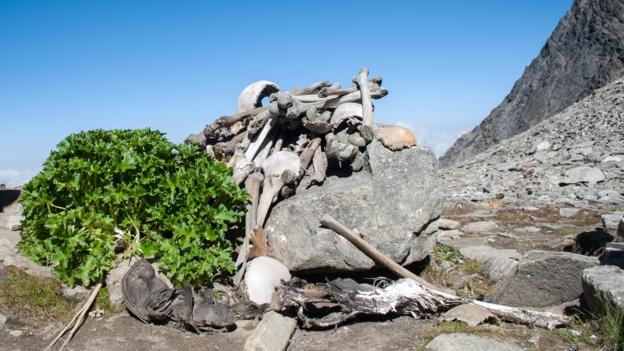
All 200 to 300 people, scientists concluded, died from a hailstorm of biblical proportions. Thousands of cricket ball-sized, hard-as-iron hailstones pounded the heads and shoulders of a group of pilgrims and their porters travelling through the area. Trapped in a valley with nowhere to hide, the entire group perished in a mass death that still fascinates fearless visitors to this day.
Travellers to the region can still see the skeletons, although summer is the best time to visit as the bones at the lake’s bottom can only be seen when the ice melts.
An island swarming with flesh-melting snakes
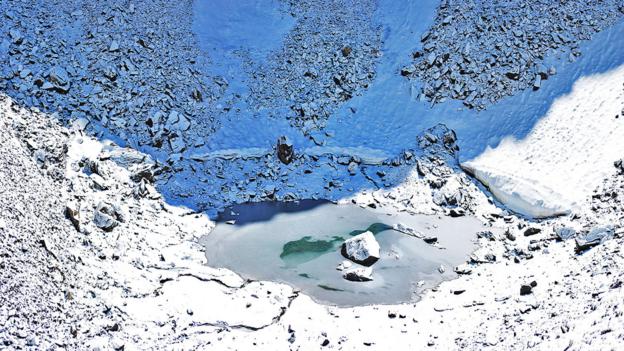
Snake Island, as it’s called, is home to an estimated 4,000 venomous Bothrops insularis, also known as golden lanceheads, a critically endangered species that got trapped on the island when rising sea levels covered up the land that connected it to the mainland. The Brazilian navy closed the island in the 1920s to protect the snakes from humans – and to protect humans from the deadly snakes. The golden lanceheads grow to more than half a metre long and possess a fast-acting poison that melts human flesh. According to some estimates, there is one snake to every square metre of the island.
“The venom causes a grab bag of symptoms, which includes kidney failure, necrosis of muscular tissue, brain hemorrhaging, and intestinal bleeding. Scary stuff, to be sure,” explained Smriti Iyer.
The temple crawling with black rats
A religious and tourist destination, India’s Karni Mata Temple is a site of both reverence and revulsion. That’s because the famous Hindu temple is crawling with thousands of rodents.
The Temple of Rats, located deep in Rajasthan’s Thar desert, houses some 20,000 black rats that are free to roam the place of worship freely. Thousands of religious pilgrims, as well as curious tourists, visit the temple every year, eager for the blessings of the holy rats.
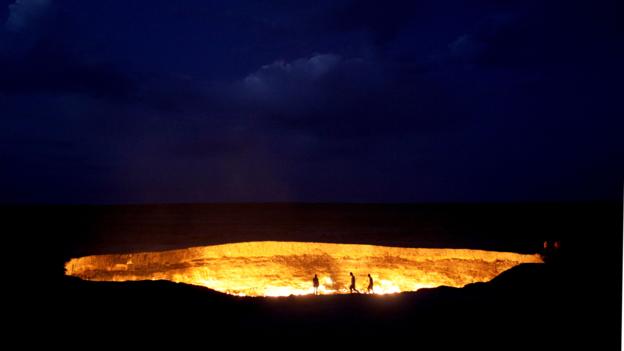
BKXM6R Derweze or Darvaza, aka as the Door to Hell is a huge crater of burning natural gas in the Kara-kum desert in Turkmenistan.. Image shot 08/2009. Exact date unknown.
According to local legend, when the stepson of Hindu deity Karni Mata drowned in a pond, Karni Mata asked the death god Yama to revive him. Yama eventually relented, but only under the condition that the stepson, and all of his caste, be reincarnated as rats.
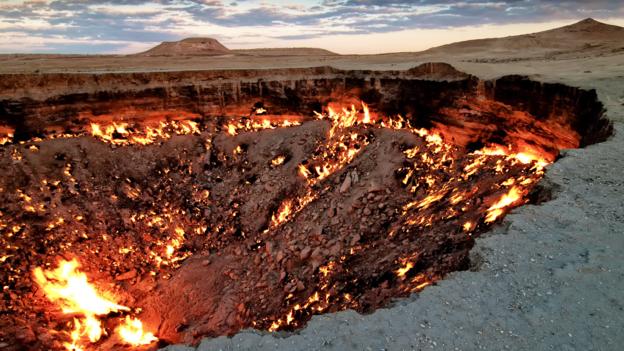
E650GW Fire crater, gas crater, Door to Hell Darvaza crater, Derweze or Darvaza, Karakum Desert, Dasoguz Province, Turkmenistan
Known as “little children” by worshippers and temple caretakers, the rats are fed milk, grains, coconut shells and specially prepared sweets by temple caretakers and worshippers. Because food that the rats have nibbled is said to bring good fortune, some religious pilgrims even partake of the leftovers.
“It’s quite the experience to walk through a temple with rats scuttling around as free as can be, and eating out of the same offerings that you're given back to consume,” wrote Prayash Giria.
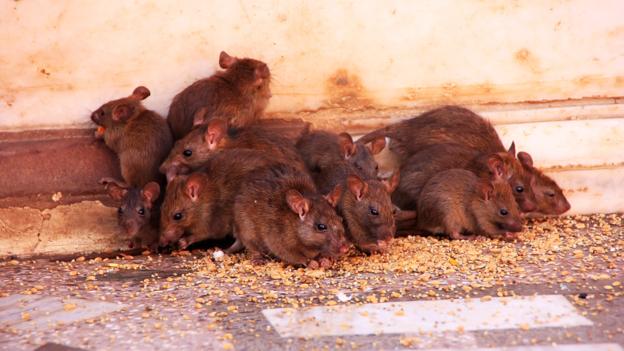
EM27K9 Holy rats running around Karni Mata Temple, Deshnok, Rajasthan, India
A real-life hell on Earth
It was a scientific expedition gone horribly wrong. In 1971, a group of Soviet scientists set up a drilling rig to assess what they thought was a substantial oil field in the middle of Turkmenistan’s Karakum Desert.
In fact, the ground beneath the rig was a massive natural gas field, which collapsed into a gaping crater upon the scientists’ arrival, swallowing the rig and their camp. Fearing the spread of poisonous methane gas, the scientists set the crater on fire, ripping open a hellish pit of vicious flames just beneath their feet. They hoped the gases would burn off within a few days or weeks.
That was four decades ago. Today, the 70m-wide, 30m-deep crater continues to burn so feverishly that locals have named the fearsome abyss of fire, flames and boiling mud the “Door to Hell”.
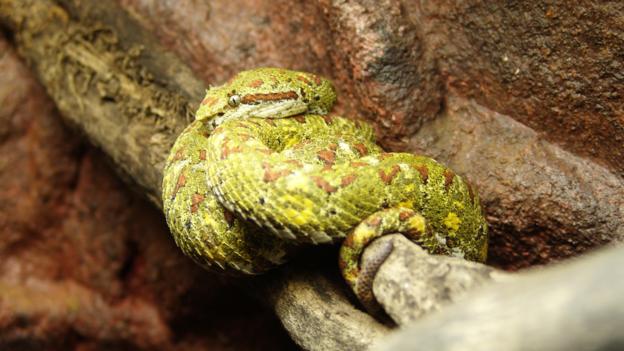
“It seems that the dangerous pit of fire will never stop burning,” wrote Aditya Basu. But that hasn’t stopped tens of thousands of travellers – some of whom even camp on the gas field – from visiting the seemingly-eternal inferno, a real-life hell on Earth.
An island of haunted dolls
Thanks to an unfortunate accident, the beautiful floating gardens of Mexico’s Isla de las Munecas are now the stuff of ghastly nightmares.
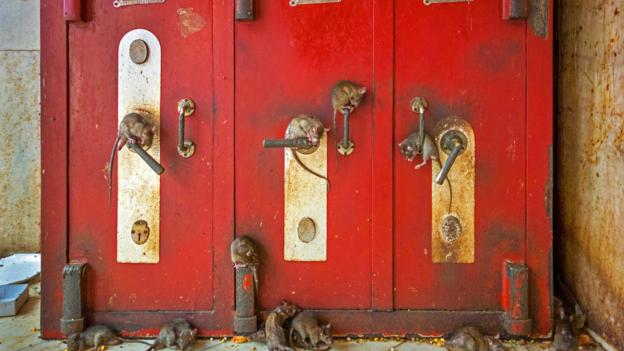
F6KG68 Many, many rats cover all surfaces at the Karni Mata Temple in Deshnok, India.
According to local legend, a girl drowned in the Xochimilco canals outside of Mexico City decades ago. After her untimely death, dolls began washing up on the shore of a small island in the canal where she died. Tormented that he couldn’t save the girl, the island’s caretaker, Don Julian Santana Barrera, began to hang the dolls from the island’s trees in her memory.
The Island of Dolls is now “dedicated to the lost soul of a poor girl who met her fate too soon in strange circumstances”, Rushali Ramteke said.
Over the years, the trees have filled with the mangled remains of dolls, their mutilated limbs and severed heads rotting in the moist air. Locals say the dolls are possessed with the dead girl’s spirit, and witnesses claim they’ve heard the dolls whispering to each other, luring visitors to the island.
That’s not the end of the story. Some 50 years after collecting dolls and hanging them across the island, Barrera himself was found drowned in the exact spot where the girl had died decades earlier.
Since Barrera’s death in 2001, the island, which is actually a floating garden, has seen hundreds of visitors – some of which even bring their own dolls to add to the haunting collection.
Политика конфиденциальности | Правила пользования сайтом
